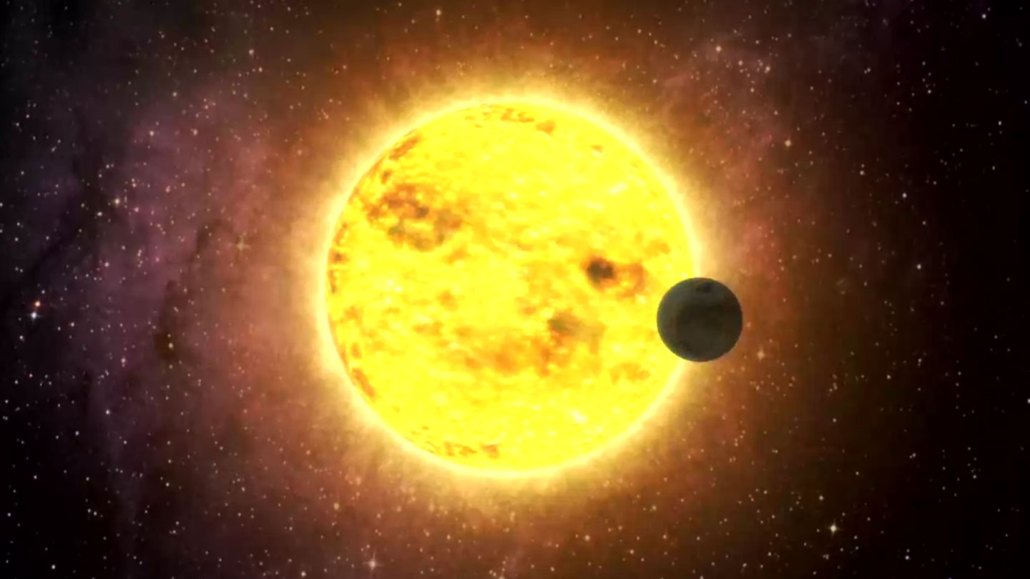Methylated gases could be an unambiguous indicator of alien life
On Earth, these gases are almost always produced only by organisms

Light passing through the atmospheres of planets in distant solar systems (illustrated) could reveal compounds that alien organisms might make to protect themselves from toxic elements.
NASA's Goddard Space Flight Center
- More than 2 years ago
SEATTLE — Attention alien hunters: If you want to find life on distant planets, try looking for signs of toxic chemical cleanup.
Gases that organisms produce as they tidy up their environments could provide clear signs of life on planets orbiting other stars, researchers announced January 9 at the American Astronomical Society meeting. All we need to do to find hints of alien life is to look for those gases in the atmospheres of those exoplanets, in images coming from the James Webb Space Telescope or other observatories that could come online soon.
Barring an interstellar radio broadcast, the chemistry of a remote planet is one of the more promising ways that researchers could detect extraterrestrial life. On Earth, life produces lots of chemicals that alter the atmosphere: Plants churn out oxygen, for example, and a host of animals and plants release methane. Life elsewhere in the galaxy might do the same thing, leaving a chemical signature humans could detect from afar (SN: 9/30/21).
But many of life’s gases are also released in processes that have nothing to do with life at all. Their detection could lead to the false impression of a living planet in a faraway solar system, when it’s really just a sterile rock.
At least one type of compound that some organisms produce to protect themselves from toxic elements, however, might provide unambiguous indications of life.
The life-affirming compounds are called methylated gases. Microbes, fungi, algae and plants are among the terrestrial organisms that create the chemicals by linking carbon and hydrogen atoms to toxic materials such as chlorine or bromine. The resulting compounds evaporate, sweeping the deadly elements away.
The fact that living creatures almost always have a hand in making methylated gases means the presence of the compounds in a planet’s atmosphere would be a strong sign of life of some kind, planetary astrobiologist Michaela Leung of the University of California, Riverside said at the meeting.
The same isn’t true of oxygen and methane. Oxygen, in particular, can accumulate when a hot star warms a planet’s oceans. “You have a steam atmosphere, and the [ultraviolet] radiation from the star splits up the water” into its constituent parts, oxygen and hydrogen, Leung says. Hydrogen is light, so much of it is lost to space on small planets. “What you have left is all of this oxygen,” which, she says, leads to “really convincing oxygen signals in this process that at no point involved life.”
Similarly, while living organisms produce methane in abundance, lifeless geological phenomena like volcanoes do too.
At the concentrations of methylated gases typical of Earth, these gases will be hard to see in the atmospheres of distant planets, even with an instrument as powerful as the Webb telescope (SN: 12/20/22). But Leung has reason to believe there may be planets where the gas abundance is thousands of times that of Earth.
“The most productive environments [for releasing methylated gases] that we see here on Earth,” she says, “are things like estuaries and wetlands.” A watery planet with lots of small continents and correspondingly more coastline, for example, could be packed with organisms cleaning away toxic chemicals with methylated gases.
One of the benefits of looking for the compounds as a sign of life is that it doesn’t require that the life resembles anything like what we have on our planet. “Maybe it’s not DNA-based, maybe it has other weird chemistry going on,” Leung says. But by assuming chlorine and bromine are likely to be toxic generally, methylated gases offer what Leung calls an agnostic biosignature, which can tell us that something is alive on a planet even if it’s utterly alien to us.
“The more signs of life we know to look for, then the better our chances of recognizing life when we do encounter it,” says Vikki Meadows, an astrobiologist at the University of Washington in Seattle who was not involved with the study. “It also helps us understand what kind of telescopes we should build, what we should look for and what the instrument requirements should be. Michaela’s work is really important for that reason.”







